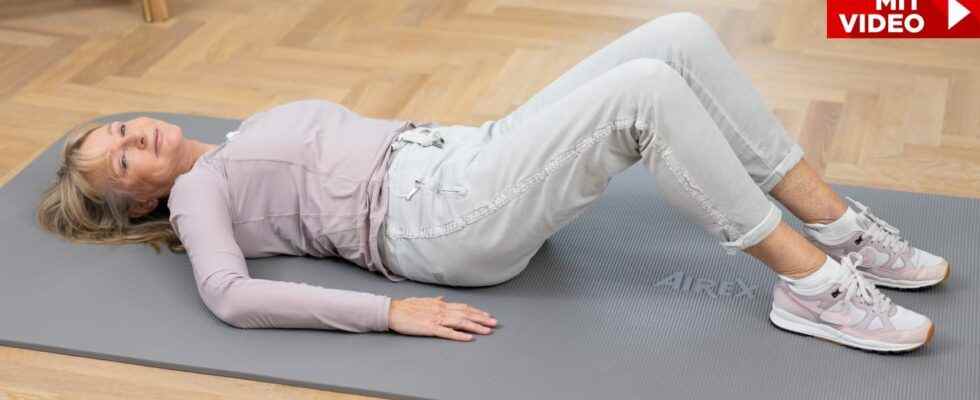Most of you know it: One wrong movement and the backache brings tears to your eyes. Nothing works anymore, you can only stand it when your hips are bent. Every thoughtless movement triggers insane pain. In addition, there is the fear of having suffered a herniated disc. Standing or sitting upright is then hardly possible, not even pain medication will help.
Our health and pain experts Liebscher & Bracht explain what you can do without having to get the ambulance straight away. “We’ll show you how you can help yourself and, in most cases, reduce and remedy your severe pain,” explains Roland Liebscher-Bracht.
Rapid emergency help
The most important thing: stay calm and do not panic or become overly anxious, because most of the pain of this kind is so-called alarm pain that wants to protect the body, in this case the spine and the intervertebral discs.
Excitement or panic would make the muscles tense even more – that would be poison for the lumbago and the pain could worsen.
It is best to lie in a pleasantly hot bathtub for 15 minutes. If your pain and restricted mobility make it impossible, take a shower, maybe sit on a stool. Repeatedly shower your back, but especially your stomach, groin and front thighs, until your entire middle body area is clearly warmed up all around.
The problem is often not just in the back, but in the front muscles of the body. For many people this is shortened by constant sitting and tends to pull the trunk forward. The rear muscles of the body, such as the glutes and the back extensor, pull against it – there is a high level of basic tension that can trigger lumbago.
Stretch the lumbago away
After the hot shower, try to lie in bed with your knees upright. Those affected can usually take this position because they then no longer feel the pain or only feel it a little. Now it is important to slowly move your feet away from your buttocks, step by step, i.e. to straighten your legs more and more.
Feel within yourself how your pain is acting. The more you stretch your legs, the more your pain will increase. This is normal and not bad, because the muscles on the front of your body that are too short, the tension of which is responsible for the lumbago, will be pulled more and more.
Gradually try to stretch your legs more and morePhoto: Liebscher & Bracht
But that is exactly what will help you get rid of your pain. If it hurts too much, move your feet a little towards your buttocks again. Always stay in an area where the pain is just barely bearable.
After a while, the muscles that are too short give in, it hurts less and less and you can increase the stretch again by slowly and carefully straightening your legs. If you need a short break to relax, put as many pillows under your knees that you can relax if the pain is bearable.
Do the leg extension exercise until you are really straight in bed.
Ideally, you will also sleep in this position so that the tense muscles can recover.
Once your back has recovered somewhat and you can move around more, start doing regular back exercises.
Important: do not take too much care!
You should urgently avoid the so-called step position, i.e. lying on your back with your lower legs on a chair. Your pain will then be less or not felt at all, but the already short muscles get used to their shortening again and the next lumbago is not far off.
Practice back sleeping
It is precisely this elongated posture that ensures that the shortening of the front muscles, which are repeatedly increased during the day by sitting and running, are largely eliminated and stretched away at night.
Sleep on your side as little as possible, because this is like “sitting while sleeping” for the body and the muscles become shorter and shorter.
* Important rules so that you do not overwhelm yourself and the exercises are particularly effective
1. Do not do these exercises if a doctor has issued a prohibition on stretching (to beois shortly after operations that have not yet healed).
2. Always move slowly and consciously as you practice. It is best to follow the announcements, instructions and the pace in the videos.
3. Limit the intensity of the stretching pain to less than ten. Ten means that the positive “feel good pain” tips over and you have to start to tense against it, either physically or mentally, in order to be able to endure the stretch. If you can just barely relax and breathe deeply without exertion, you are just below ten. Our exercises are most effective at an intensity of nine. If your body is signaling that the exercise is not good for you, don’t do it.
Attention: Please do not confuse our ten with the ten, some of which are determined using a sliding scale in conventional pain therapies. There the ten stands for the worst pain imaginable.
4. Movement pain may occur immediately after an exercise and disappear after a few minutes when you move the affected area again. If you’ve practiced intensely, it just shows that your body is responding.
5. If you use the exercises to trigger the pain that you want to get rid of, it means that you are stretching the muscles and fasciae responsible for your pain and releasing them from their excessive tension.
6. If you feel an initial worsening of your pain in the evening or at night, it is a protest from your stressed muscles. Don’t worry: this will pass. Bathe comfortably hot for 20 minutes and then stretch again at a lower intensity (8).
